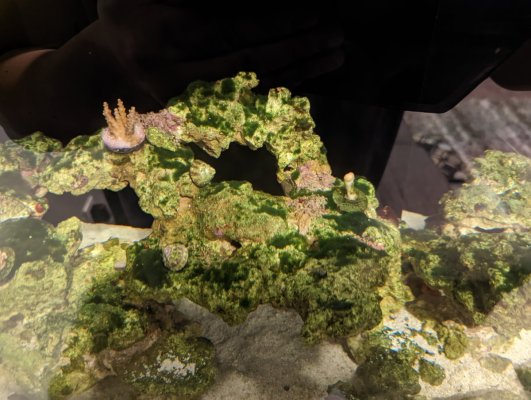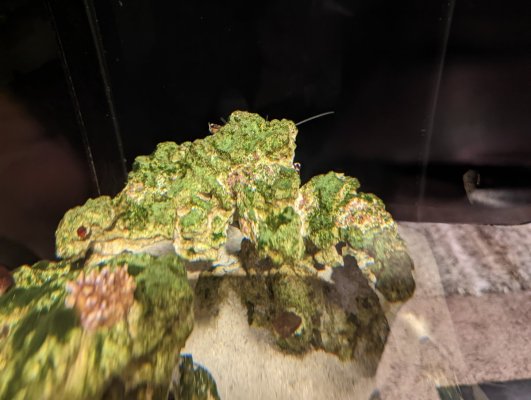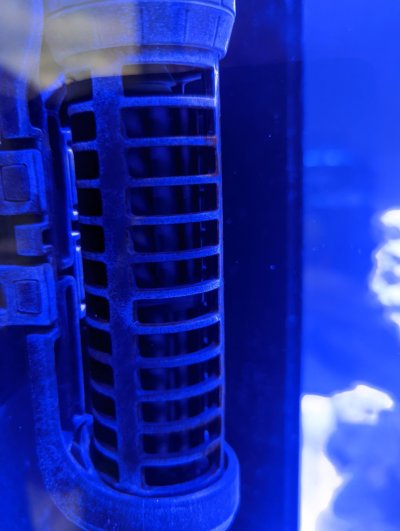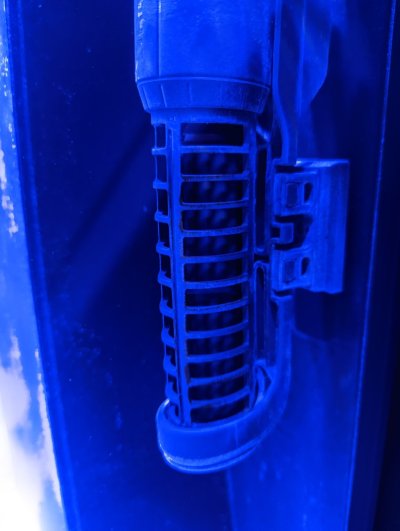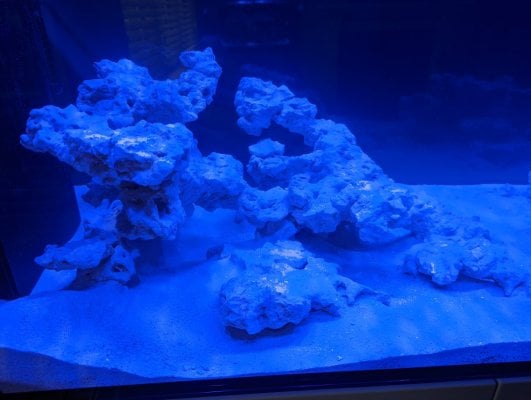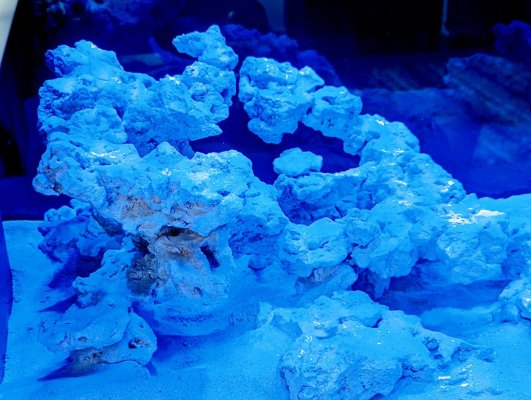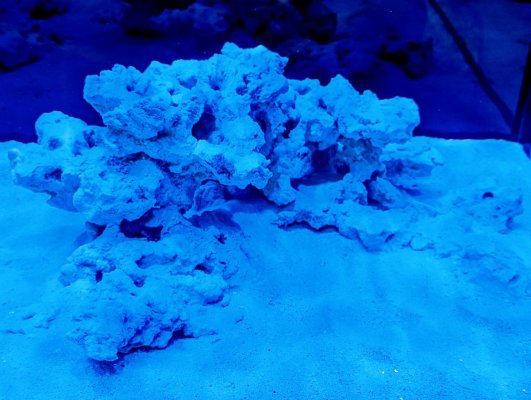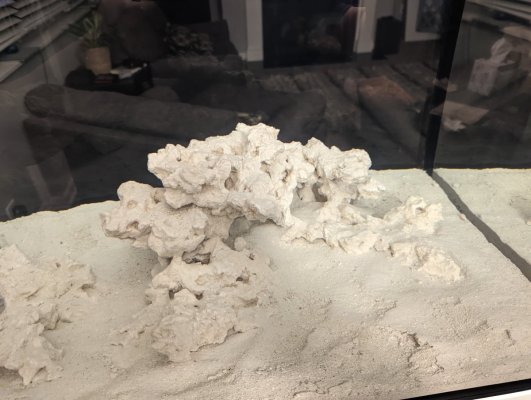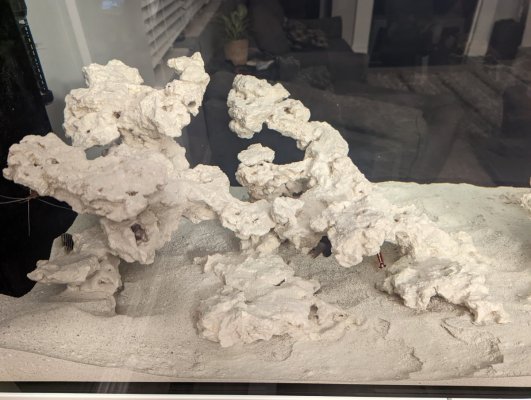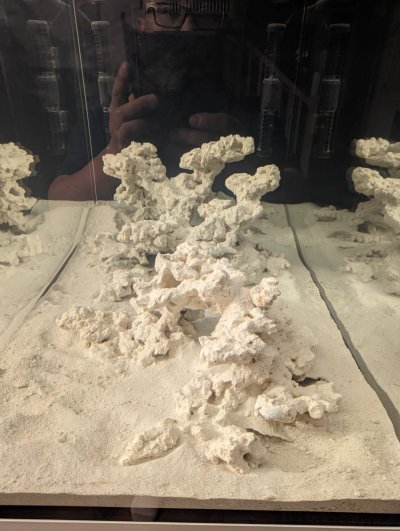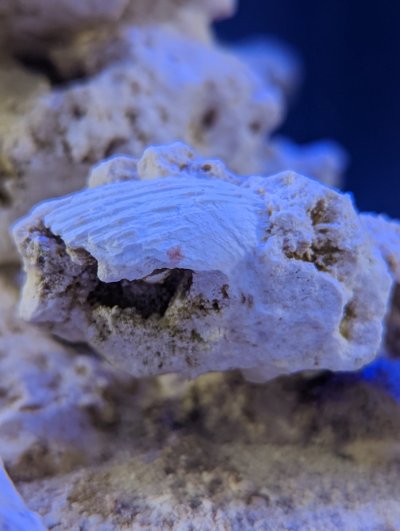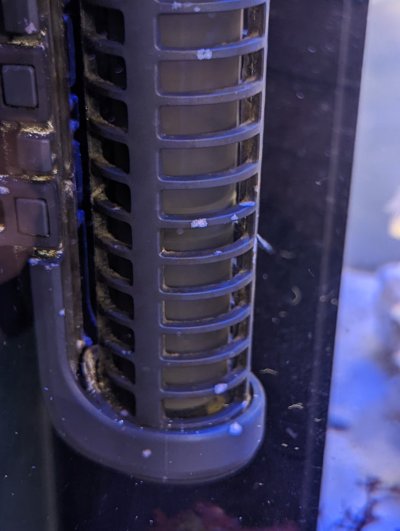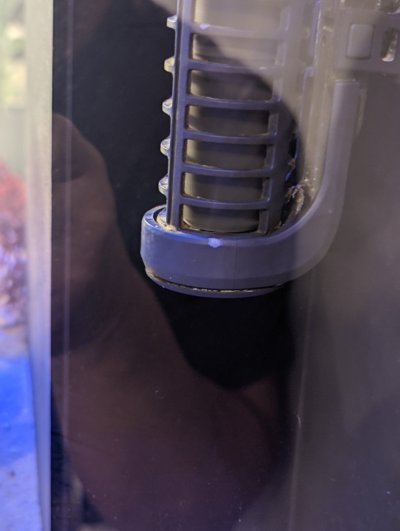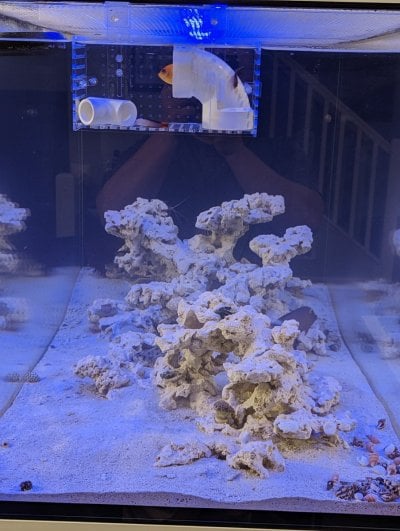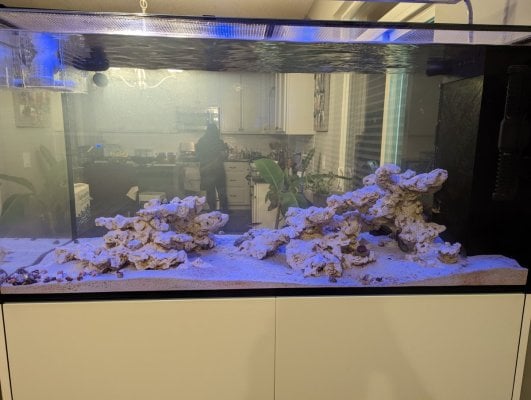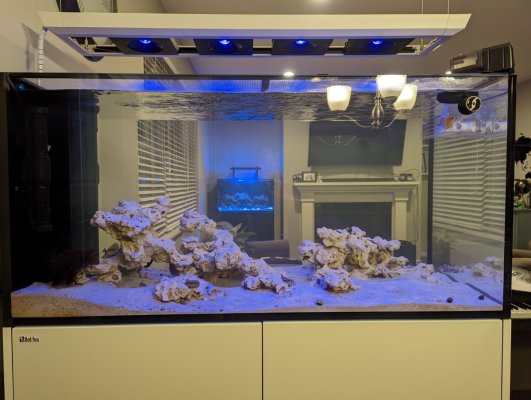Took a lights-off photo of the newer rock in the 250. This rock is newer and receives less direct lighting. The joints where heavy glue was used is still white whereas the unglued areas are beginning to grow a green coat and some bushes of GHA.
The joints are also exhibiting the same coralline growth as the older rock left of this and to the center of the tank.

I found the info @Randy Holmes-Farley linked very interesting. I will go ahead and seal the top half of the new scape and test if sealing dry rock if will grow coralline better, or in my case, faster than algae.
Will update in a couple months.
The joints are also exhibiting the same coralline growth as the older rock left of this and to the center of the tank.
I found the info @Randy Holmes-Farley linked very interesting. I will go ahead and seal the top half of the new scape and test if sealing dry rock if will grow coralline better, or in my case, faster than algae.
Will update in a couple months.



